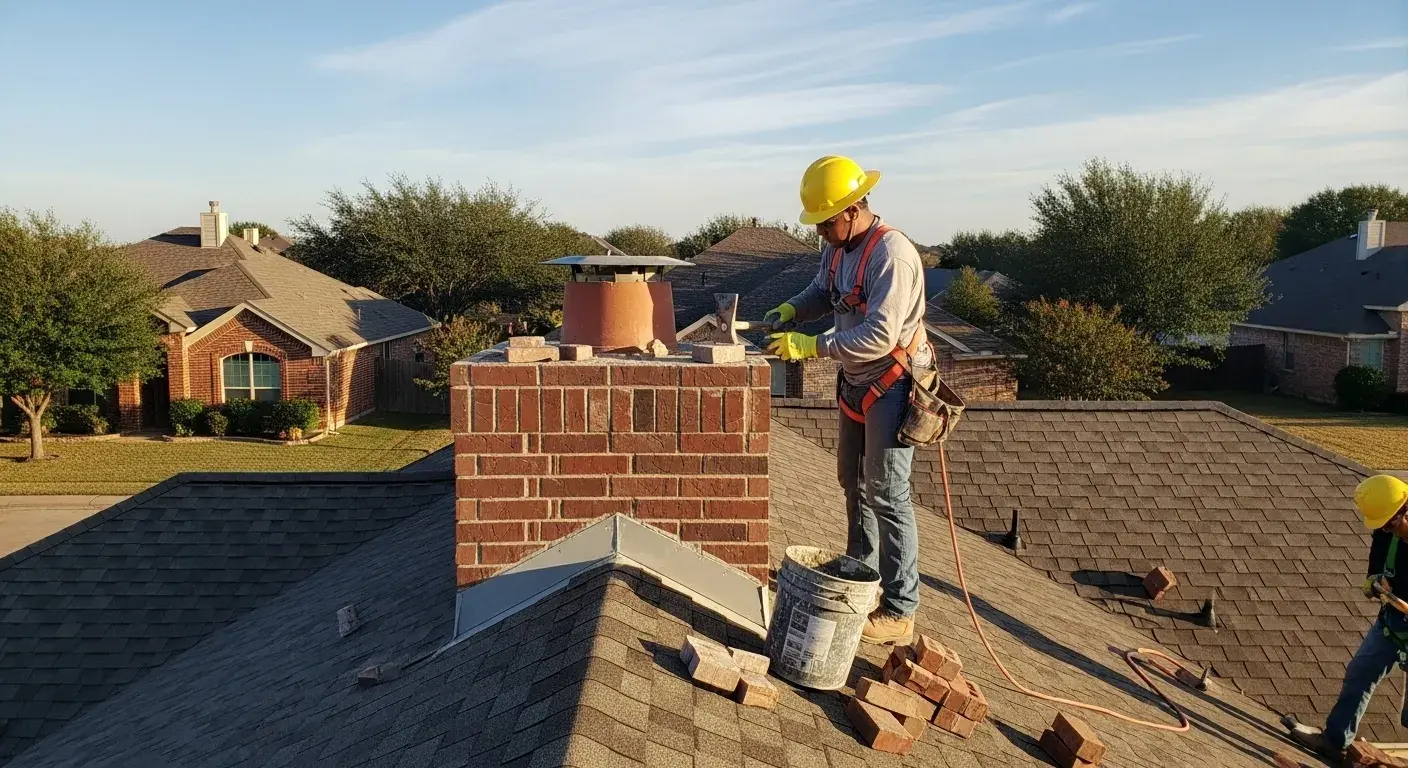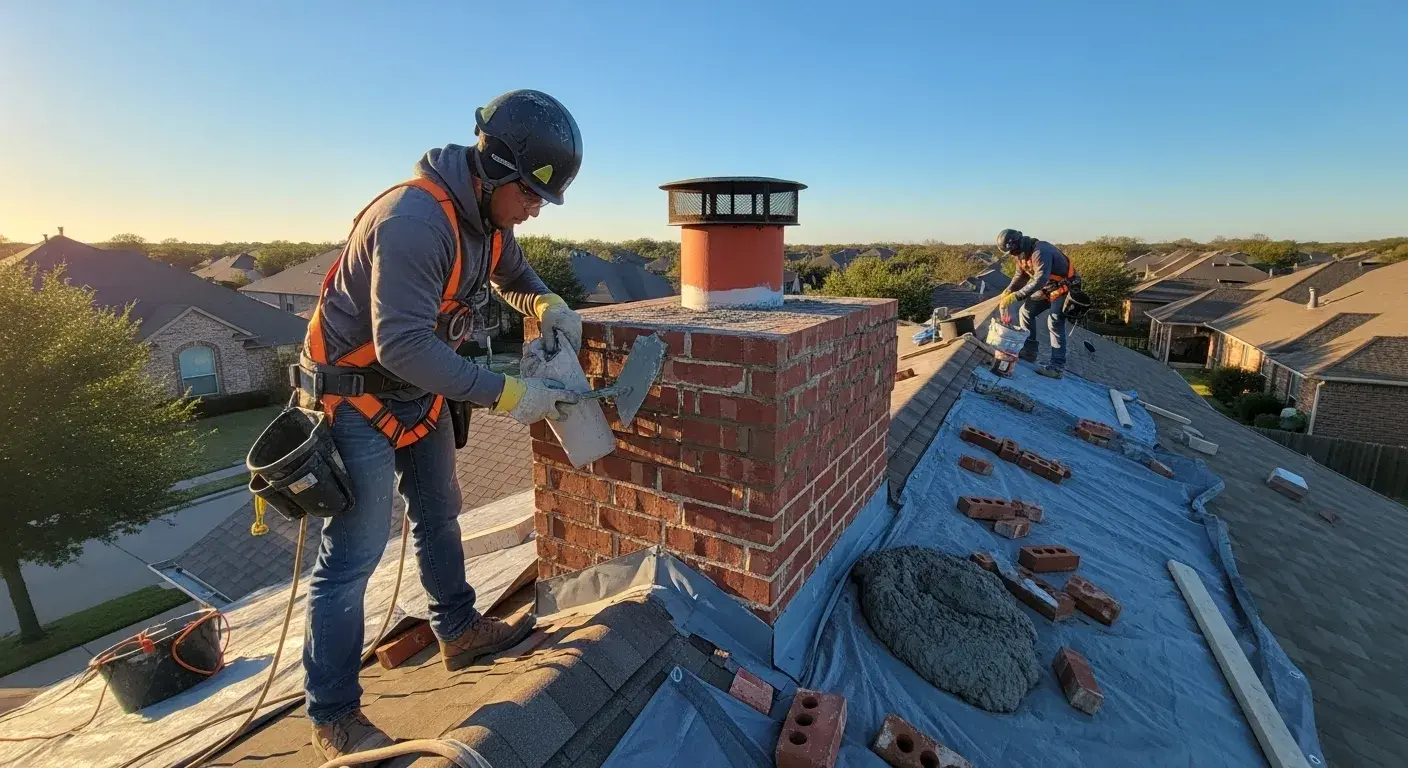Loading article...
Season-by-season chimney issues in Katy — causes, symptoms, and the repairs that prevent escalation.


Mike Johnson
Senior Chimney Specialist
Published
10/30/2025
After years of inspecting and repairing chimneys across Katy, TX, I’ve come to recognize something that surprises most homeowners:
Your chimney doesn’t age evenly — it changes with the seasons.
Each time the weather shifts, your chimney faces a different type of stress. Summer heat dries and cracks mortar. Fall humidity settles in. Winter introduces temperature swings and condensation. Spring brings storms that test every joint, cap, and seal.
That’s why many of the chimney problems we repair at Katy Chimney Sweep aren’t one-time issues — they’re year-round challenges.
If you own a fireplace in Katy or the surrounding areas, here’s what you can expect throughout the year — and how to stay one step ahead with professional chimney repair and maintenance.
Katy’s climate is tough on chimneys because it combines all the worst elements: moisture, heat, and movement.
Our region experiences:
Extreme heat that causes masonry expansion and cracks.
Humidity that seeps into mortar, bricks, and liners.
Heavy rain and wind that erode crowns and flashing.
Sudden cold snaps that cause contraction and stress fractures.
That’s a full recipe for chimney wear — even if you rarely light a fire.
Let’s break down the most frequent chimney problems we see throughout the year and how professional chimney repair keeps your system safe, efficient, and durable.
After the winter season, the first big issue that shows up is chimney leaks.
Spring rains in Katy expose every weakness your chimney developed during colder months. Cracks in the crown, gaps in flashing, or missing chimney caps allow rainwater to seep into the system.
Once water enters, it doesn’t just stay there — it moves. Moisture runs down walls, soaks into mortar, and sometimes drips into the firebox.
Musty or smoky odors from the fireplace.
Stains or damp patches on the ceiling near the chimney.
Efflorescence — that white powdery residue on the brick surface.
We start by identifying the leak’s entry point using moisture detection tools. Then we seal crowns, repair flashing, and apply masonry waterproofing treatments.
In some cases, we install chimney caps or repair worn mortar joints to block further intrusion.
At Katy Chimney Sweep, we call this spring conditioning — it’s how you keep your chimney dry and stable before summer heat takes over.
During Katy summers, temperatures can soar past 100°F. And while your chimney might not be in use, it’s quietly taking a beating.
The masonry expands under intense sun and contracts at night. Over time, that constant movement causes small stress fractures in crowns, bricks, and mortar joints.
Fine cracks forming across the crown.
Brick flakes or chips (known as spalling) appearing around the structure.
Minor gaps opening where flashing meets the roof.
Our chimney repair team performs preventive structural maintenance — filling hairline cracks with flexible sealants that expand and contract with temperature changes.
We also recommend UV-resistant waterproof coatings that protect against both water and sun damage.
Pro tip: Summer is the best time to schedule major chimney repairs. The dry weather allows materials to cure properly, ensuring repairs last longer.
As soon as temperatures drop, homeowners in Katy start using their fireplaces again — and that’s when internal problems come to light.
Months of summer humidity cause soot and creosote residue inside the flue to harden. When the first fires of the season are lit, that buildup restricts airflow, reducing draft and increasing fire risk.
Birds and squirrels may also have nested inside uncapped chimneys during the warmer months.
Smoke backing into the room when starting a fire.
Strong, bitter odor even when the fireplace isn’t in use.
Slow-burning or hard-to-start fires.
Before fireplace season, we always recommend a professional chimney inspection and sweep.
We remove hardened creosote, check for obstructions, and ensure the liner is intact. If cracks or corrosion are found, chimney relining or repair ensures gases vent safely again.
This is also the time to replace worn chimney caps — they prevent new blockages all winter long.
Even though Katy winters are relatively mild, a few cold fronts are enough to expose weaknesses in any chimney system.
Condensation forms inside cold flues when warm smoke hits cool surfaces — especially if the chimney is poorly insulated or the cap is missing. That moisture freezes overnight, expanding cracks and deteriorating mortar.
Damp soot or rust spots inside the firebox.
Poor draft, making fires smoky or difficult to maintain.
A cold, damp smell from the fireplace even when not in use.
We focus on thermal protection repairs, including sealing cracks, re-pointing joints, and insulating or relining cold flues.
By performing mid-winter maintenance, you prevent minor damage from compounding through the freeze-thaw cycle — saving hundreds in repairs come spring.
Every chimney issue we see — from loose bricks to musty odors — comes back to one element: water.
It’s not dramatic, but it’s relentless.
Water seeps into tiny cracks, expands when temperatures change, and slowly destroys your chimney from the inside out.
That’s why at Katy Chimney Sweep, every chimney repair plan we create includes some level of waterproofing or moisture management — whether it’s resealing crowns, restoring mortar, or replacing rusted components.
If you solve the water problem, you solve 90% of chimney issues.
Homeowners often assume, “If I’m not using the fireplace, I don’t need to worry about it.”
But the reality is exactly the opposite.
The worst chimney damage usually happens when the system isn’t in use.
During the off-season, heat, humidity, and rain all attack idle chimneys — slowly weakening them while no one’s looking.
That’s why routine inspections and minor chimney repairs in spring and summer are just as important as winter maintenance.
Here’s the yearly maintenance schedule I recommend to every homeowner in Katy, TX:
Spring: Leak and waterproofing inspection after heavy rains.
Summer: Masonry and crown crack repairs before peak heat.
Fall: Full chimney inspection and sweep before the first fire.
Winter: Mid-season draft and moisture check (especially after freezes).
This rhythm keeps your system clean, tight, and protected 12 months a year — not just when it’s in use.
We’ve spent years perfecting chimney care specifically for the Texas Gulf climate.
At Katy Chimney Sweep, we don’t use one-size-fits-all solutions. We tailor every chimney repair and maintenance plan to local weather, soil movement, and masonry type.
Our goal is simple: protect your home, season after season, with precision work that lasts.
Don’t wait for a leak, a crack, or a smoky fire to tell you something’s wrong.
Stay ahead of the seasons with professional chimney inspections and repairs from Katy Chimney Sweep.
We’ll show you what’s happening inside your system, explain what needs to be fixed, and get your fireplace ready for every kind of Texas weather.
Because the only thing better than a warm fire in winter — is knowing your chimney can handle every season before and after it.
Call Katy Chimney Sweep today and experience the peace of mind that comes with year-round protection.

Senior Chimney Specialist
Mike Johnson is a certified chimney specialist with over 15 years of experience in chimney cleaning, repair, and maintenance. He specializes in Texas climate conditions and has helped hundreds of homeowners maintain safe and efficient chimney systems.

The most common chimney problems in Katy and the repair solutions that actually last.

Our most frequent repair calls in Katy — leaks, crowns, flashing, caps, firebox, relining, and masonry.

From leak repair to relining and rebuilds — what pros fix most in Katy and why it lasts.